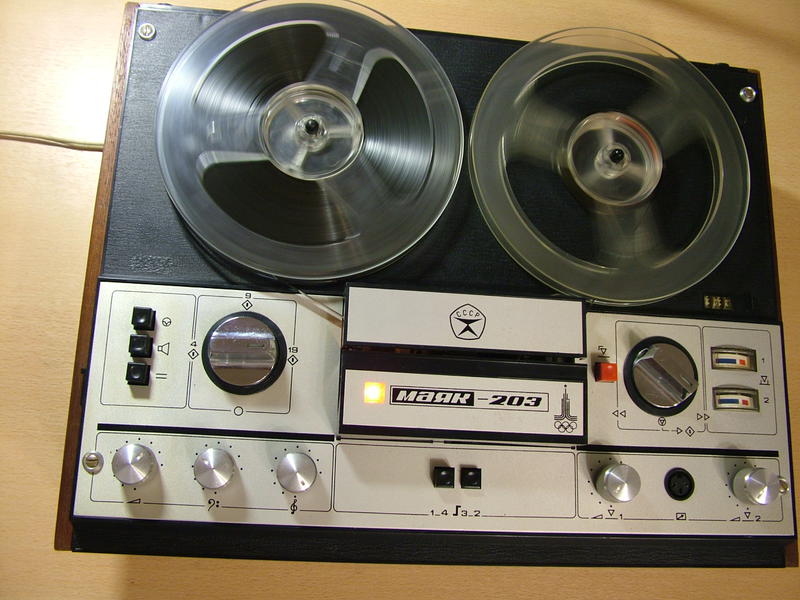A Soviet manual (1978) for an interactive integrated development system named ПУЛЬТ (translated as "console" or "[remote] control panel") developed for the BESM-6 mainframe contains a cryptic note:
Additionally, a VIDEOTON device can be augmented with a household audio tape recorder "Mayak".
Likely this portable reel-to-reel (1976), or an earlier model.
Its tape memory is also available to the users of the ПУЛЬТ system, and they are able to access data using the regular commands of the system.
Remote terminals were connected to the machine via a serial interface with speeds ranging from 300 to 1200 Baud.
Was it ever the practice in the WestI'm not asking to allow household audio tape recorders as a remotely-connected personal external storage for the users of mainframes or minis?speculate how it was connected and operated.
The question is: Was it ever the practice in the West to allow household audio tape recorders as a remotely-connected personal external storage for the users of mainframes or minis?

